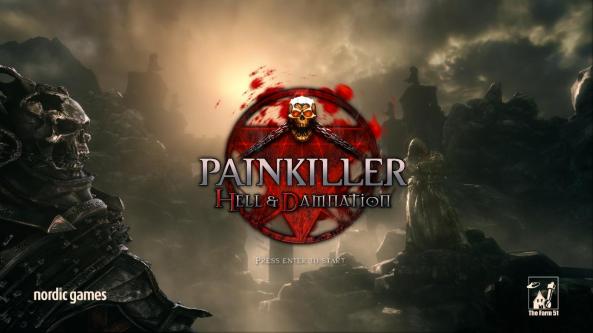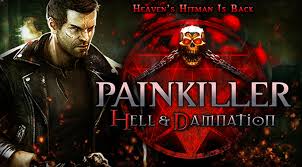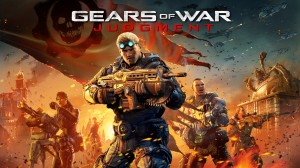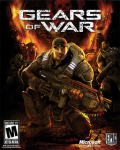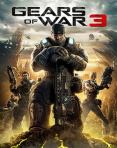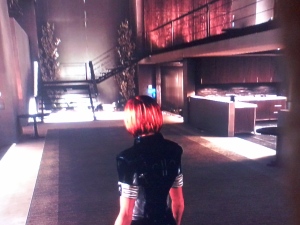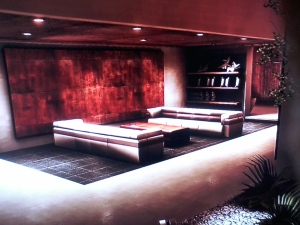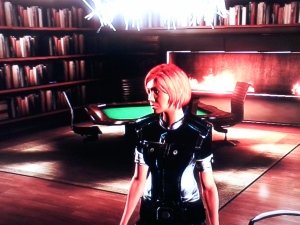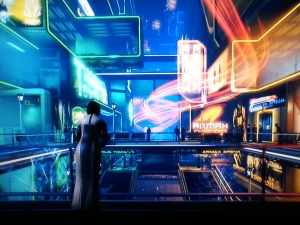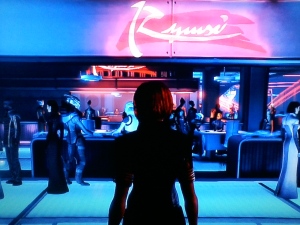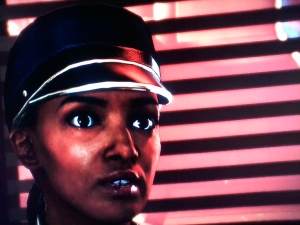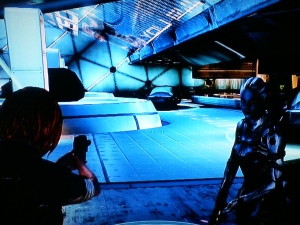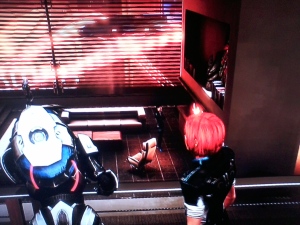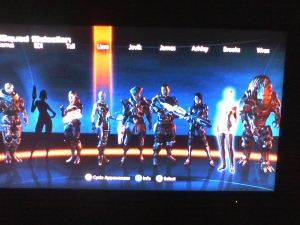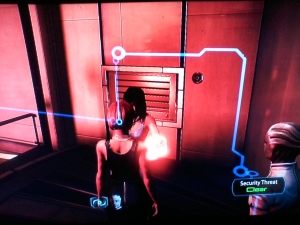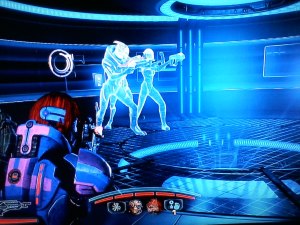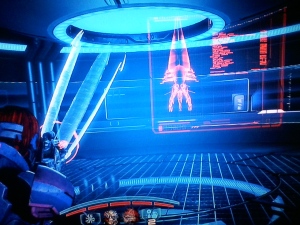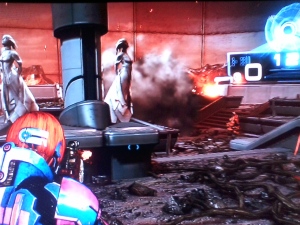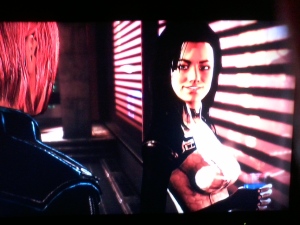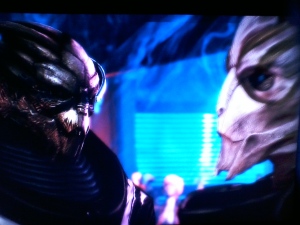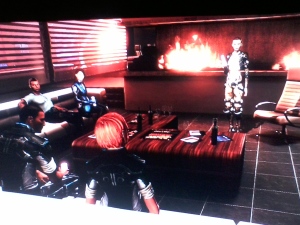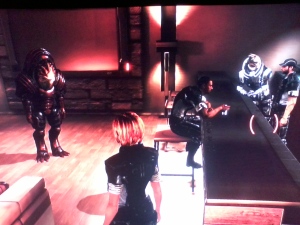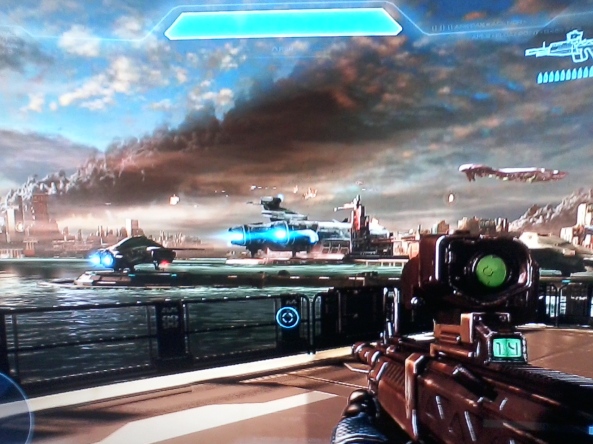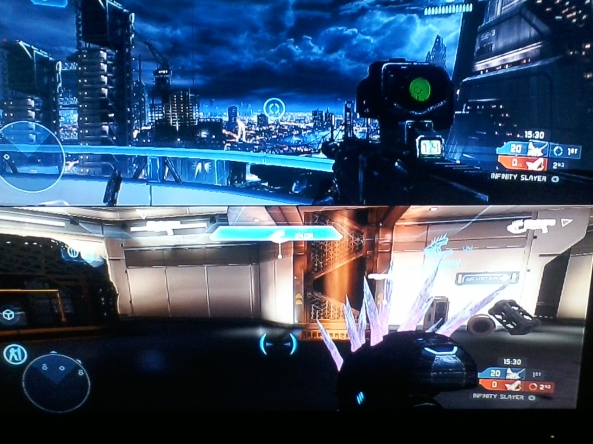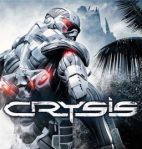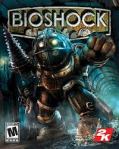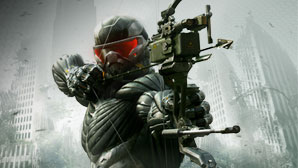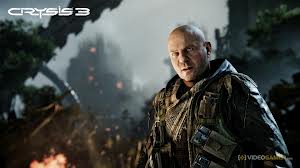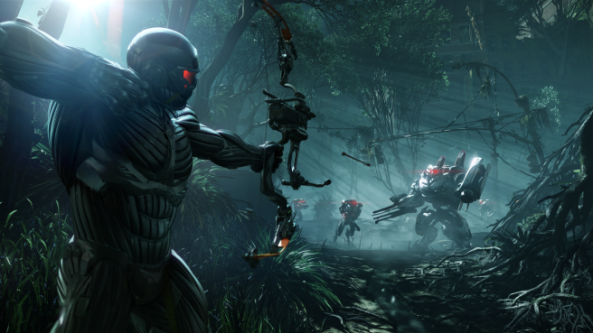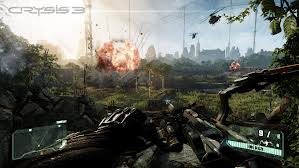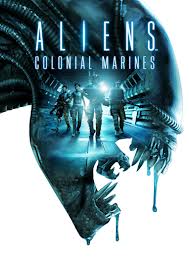Title: Painkiller: Hell and Damnation
Developer: The Farm 51
Distributor: Nordic Games
Release Date: April 5th, 2013 (PS3 and XBOX360 versions),
October 31st 2012 (PC)
Duration: Between 4 and 6 hours
Pros:
–New weapon
Cons:
-Repetitive, old levels
-Dull graphics
-Very little violence
-Cliché storyline
-Pathetically short
-Voice actors seem out of their depth
-One: the average IQ of your opponents
Less Entertaining Than: Painkiller
More Entertaining Than: Bonking a hammer over your head
Rating (out of 10): 2
In Summary: To call Painkiller: Hell and Damnation entertaining would be like suggesting the act of putting a red hot iron down your trousers, or running a cheese grater over your genitals, were genuinely smart things to do.
The original Painkiller and the first mission pack that spawned from it, Battle out of Hell, which Hell and Damnation is very loosely based upon were originally designed by People Can Fly and distributed by Dreamcatcher. Sometimes when a new developer takes the seams one must question whether or not they will pay homage to the previous titles by making a game deserving of the franchise. Sometimes, much like Halo 4, the developers can surprise you by constructing a stunningly gorgeous game with a breathtaking storyline, fantastic action sequences and an alarmingly entertaining experience. Painkiller: Hell and Damnation is not one of these games, and is in fact the reason why many new developers are looked at so skeptically when taking command of a fantastic franchise and by the end of the game, the only thing requiring a painkiller, or ten, will be you, the player, after having to endure such a soporifically torturous experience.
The story picks up after the events of the last mission pack, with Daniel Garner returning to the graveyard where he originally began his pilgrimage back in 2003. Having been denied the right to see his beloved wife Catherine in Heaven, he is stuck in the hellish land that he has set to ruin over the past few titles. All of a sudden, Eve, who had betrayed Daniel back in Battle out of Hell, and who Daniel is unable to entirely trust throughout this campaign warns him that ‘he is coming’, the ominous ‘he’ being Death.
Although Hell and Damnation is, I guess, supposed to be a brand new storyline, it uses old levels to tell its tale, with a very loose, cliché and predictable storyline playing out during the cinematics that infrequently occur over the course of the campaign. On that note, you are basically forced to fight through areas and enemies that you would have already cleansed and punished previously.
Right from the very beginning you can see the differences between the previous Painkiller titles and this new addition. Fans of the original franchise may remember that the cinematic moments were utterly sublime, the graphics being beyond fathomable, with the characters, whether they be humanoid or demonic looking so utterly realistic that the movie experience these cinematic scenes brought to the game aided in absorbing the player further into the compelling story. True, Painkiller has always been a brainless action shooter, but there was a story worth telling none the same during the cinematic sequences and it is a shame that such cannot be said for Hell and Damnation.
The graphics of the cinematic cut scenes in this game are the same visuals that will be presented to the player during the levels. Now, I will be the first to admit that the graphics of the original series were a little dull and dark, but on top of this I might remind the player that the games were using an older engine. With the use of the Unreal 3 Engine to power this particular game, one may assume that the graphics would be near astounding, with titles the likes of Gears of War 3, Bioshock Infinite and Mass Effect 3, just to name a few, being powered by this graphically gorgeous engine. Now, even though Painkiller is indeed set in purgatorial realms and hellish domains, one might assume that the engine would make the environments more beautiful than they were in previous titles. Wrong! If anything, the graphics are incredibly off putting, dull and hazy, and make the graphics of the original game continue to look fresh and lively today when in comparison.
On occasion, for instance in the level Cathedral, the bright colourations of some of the environments and castle features are a welcome change. They are not stunning per se and are in no way up to the standard of today, but are still much more engrossing than the usual grays and blacks that the game seems to more often than not rely upon. At times, such as in the level Opera House, the environment is so black that it is literally pitch, and by pitch, well, you’ll see for yourself if you decide to suffer through such a level; at times you will be unable to see an inch in front of you, let alone the enemies attempting to rid you of your health. A torch would have been supportive in such a level, which actually is used later on in the Orphanage level, which, ironically, was an unnecessary attachment.
Moving on, upon Death entering the cinematic, if you are anything like me you will be a bit at a loss as to who you are looking at. I mean, how would Death appear to you? Would this terrifying reaper be a skeletal monster with a sheath and a horse of like comparison? In Hell and Damnation, the designers obviously opted for a unique look to the harvester of souls, and with that, have basically turned him into an aquatic terror. Death basically looks like a chubby octopus with some green algae hanging from his shoulders.
In fact, a number of the characters in the game look as though they spent the hiatus between the last Painkiller and this one down at the local McDonalds, where they refused to leave, instead opting to eat their fill and then some. Eve herself, who later appears in corporeal form once more, who was originally a babe of unimaginable beauty, has decided to cover up with a few additional layers of skin. Now, I have no problem with a woman, who, unlike most models these days, actually decides to eat, so before you start sending in your hate mail and stipulating that I am a vulgar bastard, please, allow me to finish. Eve (this is the Eve FYI, who happened to have a thing with Adam at one time) is the kind of individual you would imagine to be quite special. I mean, women are naturally beautiful, so it would be natural that Eve be beautiful too, which was reflective in the previous games, but not in this one. Her hair; her face; her choice of attire; even her voice, all of this is completely different and you will in no way recognise her character.
That is the other factor you will notice. The original voice actors do not return to voice the characters, and so a bunch of new individuals have been hired on. The biggest difference here is Jon St. John who voices Daniel Garner. When it comes to voicing Duke Nukem, I would want nobody else but Mr. John to voice the character because he does an unfathomably brilliant job portraying such an action hero. As Daniel Garner though, Mr. John seems out of his depth, his deep voice being unable to convey the emotional power that was originally orchestrated in the prior titles, and it sometimes seems disturbingly humorous to have such an actor portraying a broken and defeated character. If you want someone to be taken seriously, one should hire an actor who can portray a serious part. Mr. John does a terrific job at articulating humorous one liners and other such comedic dialogue, but in Painkiller, he seems about as wooden as a tree stump.
Now, Death has not magically appeared in front of Daniel out of the goodness of his heart – he has a proposition for him. If Daniel gives to him 7,000 souls, Death will grant him his wish to finally rise up to Heaven and be with his wife. Upon this deal being struck, Death grants Daniel a new weapon, which is the only new feature of the game. Like every other weapon in the Painkiller universe it is a two in one kind of deal; the primary fire is the buzz saw, which launches a relatively strong saw blade in the direction of your target at a rather slow speed. The secondary fire is much more entertaining, and is the soul snatcher, that will rip soul’s right out from your opponents and give them to you. Additionally, you are able to aim the gun in the direction of a soul that has erupted out from the body of a fallen opponent and drag it into your character.
Old weapons, from both Painkiller and Battle out of Hell make a welcome return to the game, including, but not limited to the Chaingun Rocket Launcher, the Battle Rifle Flame Thrower and the Stakegun Grenade Launcher. On top of this, you not only begin the game with the brand new weapon that Death provides to you, but with the Painkiller device and the Shotgun Freeze Ray.
Much like in the previous Painkiller games, the goal is to go from level to level defeating the terrific amount of enemies that come in their droves to stop you. As usual, after collecting a certain number of souls, Daniel will enter demon mode, where you, the player, will be able, for a temporary period of time, to eradicate enemies with but a single shot. The enemies however are as brainless as they come, and if you can find more incompetent AI anywhere, I am almost certain that Hell and Damnation will beat that by an extra few per cent. Enemies flock towards you as though wanting to be eradicated, with no flight complex and no way to defend themselves against your attacks. On several occasions I came across enemies that ran into walls and became stuck; enemies who became stuck in corners; enemies who became stuck on the corpses of other enemies; enemies who decided to kill other enemies; the list of the blatant disregard of AI in this game is overwhelmingly never ending. On top of this, since a majority of your enemies can be eradicated with but a single shot on many an occasion, and since more of them only come equipped with melee attacks rather than long range weaponry, a lot of combatants will be annihilated before they are even able to touch you.
To make the game easier, as with previous titles, Tarot cards can be collected by completing certain objectives during the map; use only this particular weapon to vanquish the hordes of Hell; find every gold coin; find every secret area; complete the level in under a certain time constraint, etc. Due to the shortness of the game, in some levels one will discover there are in fact two cards that can be unlocked, each of which has a unique objective that needs to be completed.
Once more, the gold that is collected is used to power the cards, each one costing a certain amount to be used during a map. Each card can only be used once per map, although, like the last games, the ability to use more than one at the same time empowers Daniel considerably. Although the act of attempting to acquire the cards, along with the ability to use them can add some much needed entertainment to one’s experience, the Tarot cards are not essentially necessary, and one can efficaciously complete the game without any undue assistance.
Of course, with 7,000 souls to collect and a mass of opponents to destroy, you might imagine that, much like the previous titles in the series that Hell and Damnation will be incredibly violent; wrong again! The reason why there was such a considerably lengthy delay between the PC version and that which is on console is due to a German classifier, who stated that the game was unnecessarily evil in its violence. It is at this moment that I could make a vulgar and rather racial joke about this, but I will avoid the urge. I however did have a go at the PC version after playing the one on XBOX, and really, there is not much difference in the amount of blood and gore; both versions have very little of it. In previous Painkiller’s you almost needed to bring a towel to wipe the gore from your screen as it oozed across every surface of the environment, but in this particular game you see a quick spray of red from the bodies of those that are blown to smithereens and nothing else. Classified MA in Australia for Strong Horror Violence and Blood and Gore, if a game is going to have such a classification attached to it, then I will very much appreciate seeing all of this supposed ‘blood and gore’. Now, I am not necessarily a Satanist, but I prefer my games to have a bit of arterial red in them, and Hell and Damnation more often than not refuses to bathe the player in the bright red bodily ooze of fallen opponents.
All of the opponents you face moreover are replicas of those that you would have fought during the original campaigns, with a few changes here and there. Often when playing through a level, different opponents than the ones you remember initially fighting will appear, but the change is barely worth noting. Some minor alterations have additionally been implemented with some of the combatants, including providing the skelebones with arms and a blade to wield in each, and reducing the Skeletore, who was a terrific 8 foot tall badass with a double barreled shotgun in the original Painkiller, being strong, dangerous, and capable of using other enemies as demonic shields, to a four foot delinquent incapable of inciting fear into an ant, let alone the player.
Additionally, a couple of the original Boss monsters return for the slaughter, including the Necrogiant and Alastair. In the case of Alastair, like with the Skeletore, the developers decided to ‘improve’ upon the original design, so instead of the boss being a gigantic fire breathing monstrosity who would make even Godzilla wet his pants, they have sent him off to Jenny Craig, where they not only took off some of his muscle, but much of his height as well. The end result is this flimsy, 6 foot tall creature with goat legs, the body of a hairy chimp, two bat wings and the face of a gorilla; not exactly a fire breathing dragon now, is it?
Moving on, the levels you will fight through are from the original Painkiller game, and the mission pack, Battle out of Hell. Players may remember that Painkiller came with 24 levels, and Battle out of Hell was equipped with 10, and so it is blatantly obvious that 20 of them have apparently disappeared into the ether in this particular campaign comprised of 14 levels. You begin the game in the Graveyard level, as the player would have in the first game, and will continue on through other known maps the likes of the train station and the theme park. Other fun maps, the likes of the Military Base, the Tower of Babel, the Town, the Labs and Dead City are not included, and so, if you are anything like me, you are going to be adversely disappointed by the game’s content.
An interesting new addition to the levels though are the Boss monsters, who reign over these lands, and sometimes you see then moving about the environments in the background. When you begin the game in the Graveyard, you might suddenly experience a moment of pause as you look up to see the Necrogiant walking about the place, and later still, you may see him interact with the world by shoving his huge hand through the ceiling of a building you happen to be standing in.
Throughout the game, from the cinematics to moments during the levels themselves, random hints are provided as to what the ending will be comprised of, and the developers do not disappoint by leaving it wide open for a sequel. The ending, although rather unlikely, makes it seem as though brand spanking new content is just waiting around the corner to be explored in any potential new games that are to be made in this new franchise, I must wonder – why would anyone want to persist in this experience?
On that note, all of this combined makes for a very short game, and if you are in anyway interested in purchasing this particular title, I would recommend that you perhaps borrow it from your local video store and complete it over the course of a night, for I cannot imagine anyone wanting to experience this campaign twice.
If the developers of Painkiller: Hell and Damnation should feel anything after having completed this project, it is shame. Painkiller has been an abundantly popular series over the years, and what this game does is take everything that made the series entertaining to play and completely ruin the enjoyment for everyone. I would be seriously surprised if this dreadful excuse for a sequel manages to spawn another, and if it does, I only hope the developers do a better job than they did this time around. If Farm 51 want my opinion, it is this; if you want to create an appalling, pathetic excuse for a video game, I ain’t going to stop you; I do however recommend that you do not destroy a perfectly good franchise in the process.
IMAGE CREDITS:
http://www.nerdly.co.uk/2013/01/23/review-painkiller-hell-damnation/
http://www.tgrealm.com/blog-posts-137/tgr-blog-hands-on-painkiller-hell-damnation/
